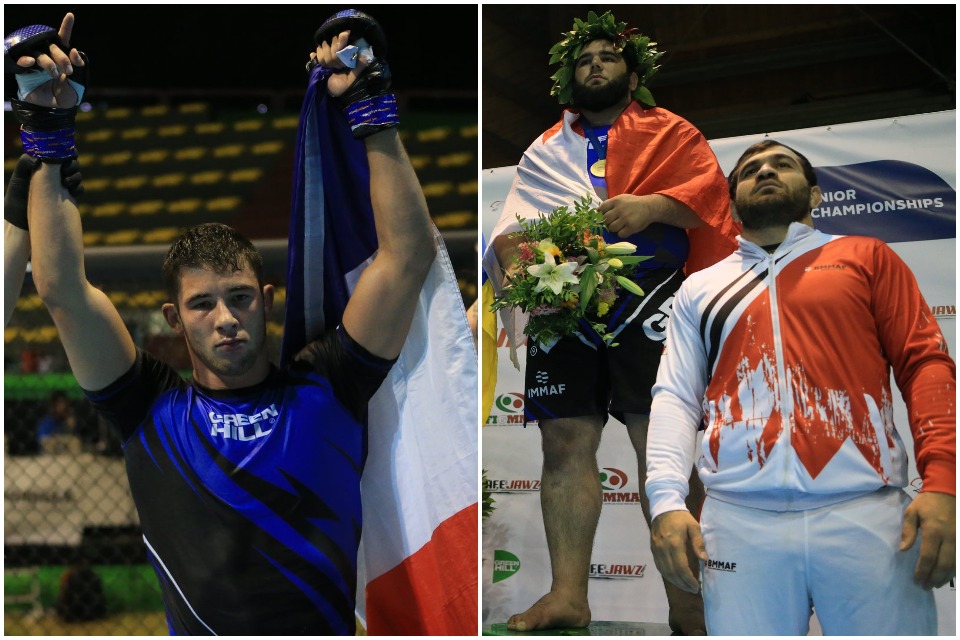Below, IMMAF.org breaks down five of the biggest developments in the senior pound-for-pound and national team rankings, covering 800 athletes and over 60 international teams.
1. Axel Sola Clings on to No.1 Pound-for-Pound Spot

It’s been a rocky year for Frenchman Axel Sola as the world’s highest ranked athlete sees out his final year of amateur competition before aiming to turn pro. The two-time world silver medalist and former European Open gold medalist entered 2019 as the world-number-one, stepping up from welterweight to middleweight, and earned gold medals at the Oceania and Pan American Opens. However, a rare defeat for the 21-year-old at this year’s Asian Open served as his first setback before a hand injury saw him withdraw from the Africa Open final. After showcasing fine form to reach last month’s European Open semis, the injury resurfaced and Sola opted to take bronze with a view to being fully fit for the 2019 World Championships in November.
2. Bahrain Holds off Russia to Remain as No.1 Nation

After years of state investment dedicated to Bahrain’s national team and the sport’s domestic grass roots, Bahrain secured the coveted number-one spot this year in the IMMAF – WMMAA national team rankings, with vast success at the Asian and Africa Open Championships. Bahrain and Russia went head-to-head at the 2019 European Open with each nation earning 5 gold medals. While Russia topped the overall senior medal table, Team Bahrain had done enough to stick around as the world’s highest placed team heading into the 2019 World Championships back on home soil this coming November.
3. Sweden Drops from 3rd to 5th Place

After years of success for Team Sweden, the nation faces its greatest test to date in regaining podium prominence. In the wake of past champions and team icons having turned pro, Sweden’s new wave of talent have had it tough as more and more nations produce gold medal contenders. Top women’s strawweight Nina Back (pictured), perhaps Sweden’s strongest current performer, is the nation’s highest ranked athlete, the world and European silver medalist occupies 16th place in the pound-for-pound standings. It’s worth remembering that past Swedish greats such as Smajic, Holm, Ringblom and Akman all faced early defeats with the national team before going on to conquer their divisions.
4. Bulgaria Drops to 14th place

From 2015 to 2017 the Bulgarian national team was second only to Sweden as the Baltic nation hauled in the medals. However, Bulgaria’s most successful standouts, such as Ferdun Osmanov, Daniel Galabarov and Alexandra Toncheva, each moved on to fulfill professional aspirations. The Bulgarian MMA Federation, with alternate coaching staff, have been unable to maintain past standards of success and failed to earn a gold medal for the first time at the 2019 European Open, instead forced to settle for a trio of bronze medals with two-time world champion Delyan Georgiev also seeing his 28-0 win streak ended by a split-decision in the semi-finals. Nevertheless, the potential is there for Bulgaria to reawaken its world leading form as a nation that has shown itself to be a consistent producer of young talent.
5. Ukraine Breaks the Top 10, Storming to 6th Place

Up from 12th place in the national team rankings, Ukraine storms into the top 10 with flourishing form dating back to 2018 when men’s lightweight Pavel Senchenko won European Open gold, followed by Daria Samchik winning the women’s strawweight world title. Continuing the nation’s momentum, Ukraine placed 3rd in the senior European Open medal table, as Anastasiya Svetkivska claimed the women’s strawweight gold and Ata Atdayev upset Russia to take the men’s flyweight title. Supplemented by the likes of silver medalist Artem Afanasenko (pictured) eliminating reigning world champion Georgiev, Ukraine looks set to challenge the likes of Sweden and Kazakhstan at the 2019 World Championships for a place in the top 3.
Download respective senior and junior pound-for-pound/team rankings sheets HERE
By IMMAF.org lead writer: Jorden Curran
]]>
